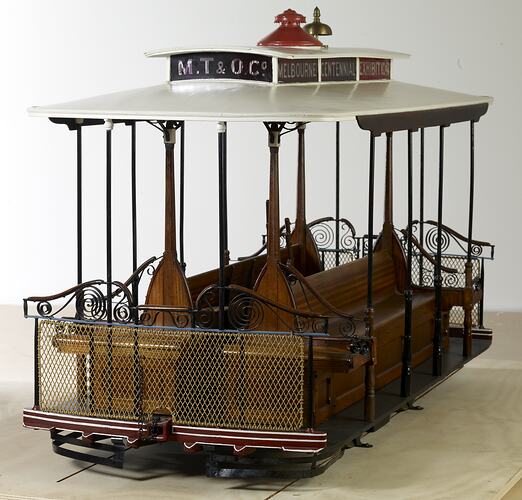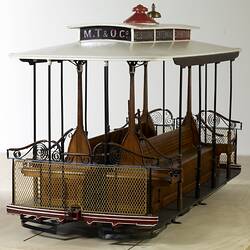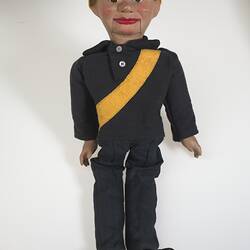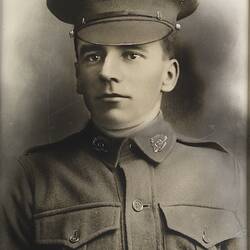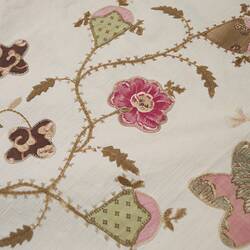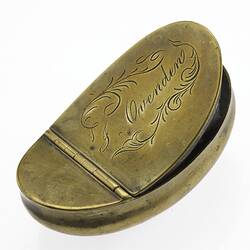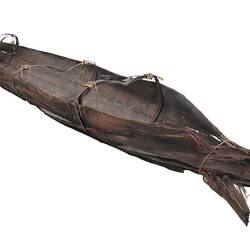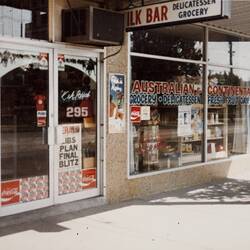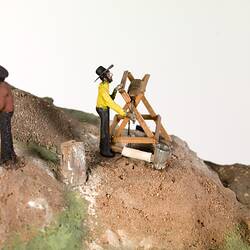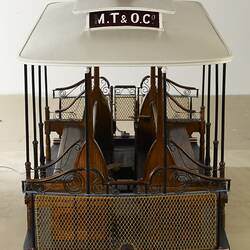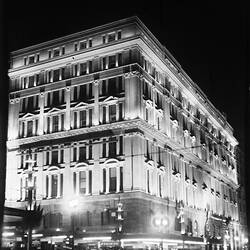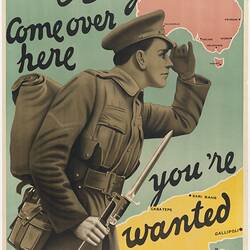Summary
The Melbourne Story exhibition features more than 1200 collection objects from Museums Victoria's collection, making it the most complete and object-rich exhibition about Melbourne ever staged.
The Melbourne Story exhibition explores the history of Melbourne from the time of earliest contact between white settlers and local Indigenous people. The exhibition consists of historical stories, artefacts, images and interactive components that illustrate the unfolding Melbourne story as seen through the eyes of its citizens - Indigenous peoples, settlers, refugees, those who found 'the good life' and those who struggled to survive.
The exhibition focuses on significant events, places and people, and is organised around successive periods in the city's history.
1835-1850 Melbourne the meeting place
The meeting between John Batman and a group of Aboriginal men in 1835, the taking over of land and planning of Melbourne's streets. First immigrants arrived, Melbourne was granted city status and Victoria separated from New South Wales in 1850.
1850-1880 Gold Town
The discovery of gold and rapid population increase meant the establishment of local government. Expansion of the city infrastructure focussed on transport and communications whilst other changes meant restrictions were placed on Chinese immigration and more re-settlement programs were endured by Aboriginal people.
1880-1900 Boom and Bust City & Little Lon
The new Royal Exhibition Building, growing economy and land developments were followed just 11 years later by the 1891 Depression. The Coranderrk petition was presented to government and Melbourne faced further migration issues and poverty.
1900-1920 Melbourne and the Nation
Melbourne was the temporary capital of the newly federated nation and every person was affected by World War I. New immigration restrictions were put in place, Dame Nellie Melba returned to her home town, the Sunshine Harverster company was established, the first basic wage was enforced and Victorian women got to vote.
1920-1945 Electric City
With World War I over life in Melbourne improved and people enjoyed themselves for a time. Electricity came to the city and housing, transport networks and businesses grew at a fast pace. Phar Lap captured people's heart at a time when people were struggling due to the Great Depression. World War II started in 1939.
1945-1980 Suburban City
Post-war years brought massive changes to the city. Immigration increased, high rise complexes were built and industries flourished. The first Holden car was made in Melbourne, roads and shopping malls appeared, Queen Elizabeth visited the city and Tullamarine airport opened. Television entered our lives and Melbourne held the 1956 Olympic Games.
More Information
-
Keywords
social history, European Settlement of Australia, Aboriginal History, Aboriginal People, Aboriginal Issues, immigration, Gold Rushes, Royal Exhibition Building, World War I, 1914-1918, World War II, 1939-1945, Aboriginal peoples (Australians), Economic Depression, 1890s, Migration & Settlement, Migration Schemes, feminism, motor vehicle factories, Royal Visits, Olympic Games: Melbourne, 1956
-
Localities
-
Authors
Museums Victoria Staff, Ms Deborah Tout-Smith, Eloise Coccoli
-
Article types
